Why It’s Time to Turn Your Travel Content into Income
We’ve all dreamed of traveling full-time, sipping coffee in Lisbon, hiking in Bali, taking perfect sunset photos, and maybe sharing it all on Instagram or a blog. But here’s the truth: likes don’t pay the bills.
If you’ve been wondering how to turn your travel stories into actual income, you’re not alone. Thousands of creators are realizing that the path to sustainable freedom isn’t just “posting content”, it’s about building digital assets that sell while you sleep.
In this guide, I’ll walk you step-by-step through how to sell travel guides and turn your experiences into valuable digital products. I’ll share my best insider tips, free tools, common pitfalls, and real advice I wish someone had given me earlier.
Think of this as your travel creator’s survival map: honest, detailed, and practical.
Disclaimer: This guide is for informational and educational purposes only. We are not sponsored, endorsed, or affiliated with any brands, tools, platforms, or services mentioned in this article. All examples and references are included solely to illustrate concepts and help readers understand available options. Always conduct your own research before purchasing or using any product or service.

The Business of Modern Travel Content
What “Selling Travel Guides” Really Means in 2025
Let’s clear this up: selling travel guides isn’t just about writing eBooks. It’s about packaging your travel knowledge; your local insights, hidden gems, and tested routes into digital products people actually want to buy.
Digital travel products can include:
- Detailed city or destination guides (3-day itineraries, local experiences)
- Checklists or travel planners (packing lists, budgeting templates)
- Google Maps bundles of saved locations
- Notion or Canva templates for trip planning
- Mini video courses (e.g., “How to plan your first solo trip”)
And the beauty? Once it’s made, it sells forever.
Creators like Salt in Our Hair, Helene in Between, and Dan Flying Solo have proven that one good travel guide can generate consistent income for years.
When you sell travel guides, you’re creating evergreen value, something that keeps earning even when you’re not online.
The Mindset Shift Every Travel Creator Needs
Stop thinking like a “blogger.” Start thinking like a digital entrepreneur. Every trip you take is research. Every note, photo, or tip could become part of your next paid guide.
When you shift from “posting memories” to “creating assets,” that’s when monetization becomes natural.
The 7-Step Blueprint to Sell Travel Guides
Step 1: Pick a Profitable Travel Niche
Here’s your first fork in the road: you can’t sell to everyone.
The travel space is massive, so the secret is focus.
Pick a niche based on your unique experiences and the problems you can solve. Some profitable examples:
- Solo female travel (safety guides, itineraries, community tips)
- Budget backpacking (cheap stays, food hacks)
- Luxury travel (exclusive resorts, high-end routes)
- Digital nomad lifestyle (co-working cafés, visas, Wi-Fi spots)
Pro tip: Validate your niche before you commit.
Use Google Trends, Pinterest, and Etsy to see what’s popular. If people are already searching for it, great! That’s your proof of demand.
Step 2: Plan Content That Leads to Sales
In the creator world, there’s a huge difference between inspiring content (likes) and solution-based content (sales).
Your content should lead readers on a journey:
- Free social post → builds awareness
- Blog post → builds trust
- Paid guide → solves a problem
This is your funnel in action.
Create blogs like “Best Free Cafes in Paris for Digital Nomads,” then link to your paid Paris Nomad Guide at the end. Each free piece should point to a paid offer.
Bonus Tip: Use Notion or Trello to plan 10–15 content ideas that naturally connect to your guide.
Step 3: Create a High-Value Travel Guide
Now let’s get practical.
Your guide should be:
- Visually appealing: readers should enjoy scrolling or flipping through.
- Actionable: maps, links, contacts, checklists.
- Specific: niche-focused, not generic “Top 10” fluff.
Recommended tools:
- Canva or Affinity – for design
- Google My Maps – for creating location pins
- Notion or Google Docs – for writing
- Mockups – to make product previews.
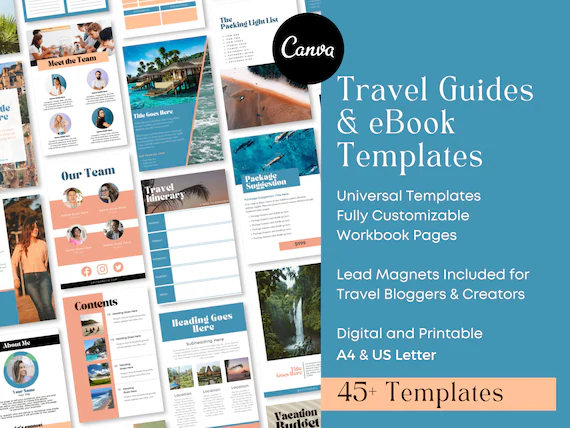
How to Make Your Guide Stand Out in a Crowded Market
What truly sets your travel guide apart isn’t just design; it’s your story. Infuse your personality, lessons, and local insights into every page so it feels like a genuine companion, not another copy of what’s already online. Focus on details that only you noticed, the café tucked behind a mural, the trail locals actually use, the sunset spot no map shows.
Pair that authenticity with clean visuals and smart touches like short videos, playlists, or QR codes to deepen the reader’s experience. The best guides make people feel they’re exploring with you; that connection is what turns casual readers into loyal buyers.
Step 4: Design & Brand Like a Pro (Even as a Beginner)
You don’t need a design degree to make something beautiful.
Use Canva Pro templates or buy customizable ones from Creative Market.
Focus on:
- Clean cover design
- Consistent color palette
- Readable fonts
- High-quality photos (use Unsplash or your own travel shots)
Make it look worth the price. People buy visuals first.
Step 5: Set Up Your Digital Storefront
Your next step: get your guide ready to sell.
Best platforms for beginners:
- Gumroad – simple, global, low fees.
- Etsy – perfect for visual discoverability.
- Payhip or Podia – more control and email integration.
Pricing sweet spot:
Start between $9–$29. Offer a smaller freebie (like a checklist) to grow your email list.
Connect your shop to ConvertKit or MailerLite so buyers automatically join your email list for future launches.
Step 6: Create a Funnel That Converts
Here’s the key: people need to discover, trust, then buy.
The Travel Content Funnel:
- Awareness → Instagram Reels, Pinterest, YouTube Shorts.
- Engagement → blog posts, newsletters.
- Conversion → your paid guide or bundle.
Example:
Post: “5 Hidden Cafes in Lisbon”
Blog: “Why Digital Nomads Love Lisbon”
CTA: “Grab my full Lisbon Nomad Guide for just $19.”
Bonus Tip: Repurpose your content. Turn one trip into 10 pieces of micro-content across platforms.
Step 7: Launch, Market & Scale
Treat your travel guide launch like a mini event.
Before launch:
- Tease it on social media (“My Lisbon Nomad Guide drops next week!”)
- Share behind-the-scenes stories.
- Offer early bird discounts.
During launch:
- Announce it everywhere: blog, email, stories, Reddit, Facebook groups.
- Ask your community to share.
After launch:
- Collect testimonials.
- Offer bundles (“Buy my Bali Guide, get my Ubud itinerary free”).
- Add upsells or affiliate links.
And remember: it’s okay if your first launch is quiet. Every creator starts there.

Overcoming Common Barriers
- “I’m Not a Designer” → Use Templates
Start with pre-made Canva templates. Search “travel guide Canva template” — customize colors and fonts to match your brand.
- “I Don’t Have an Audience” → Build Visibility Fast
Don’t wait for followers. Use Pinterest SEO, Reddit communities, and travel Facebook groups to reach your target readers.
- “I’m Scared to Sell” → Reframe It
You’re not “asking for money” — you’re offering value that saves people hours of research.
- “It’s Too Technical” → Keep It Simple
Every tool you’ll use (Gumroad, Canva, ConvertKit) has free YouTube tutorials. Bookmark and learn as you go.
Big Sister Advice: You’ll doubt yourself. You’ll compare your work. But remember, every full-time travel creator once felt the same. Start small. Improve often. You’ll thank yourself later.
Scaling Beyond Travel Guides
Once you sell your first guide, your world opens up.
You can expand into:
- Online courses — teach trip planning or content creation.
- Coaching/consulting — help others build travel brands.
- Affiliate partnerships — recommend hotels, flights, gear.
- Sponsored collaborations — brands love creators with proven product sales.
Bundle your guides. Offer membership access. Automate with chatbots and email flows that upsell your other products.
This is how your first digital guide becomes the start of a travel business ecosystem.
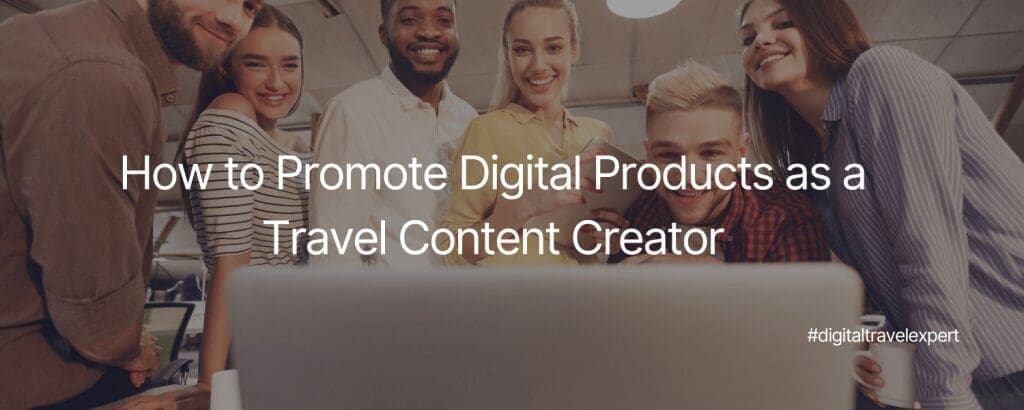
How to Use AI Tools to Speed Up Travel Guide Creation
AI can be your secret co-pilot in the process of creating and managing travel guides, but it should enhance your creativity, not replace your storytelling. The power lies in using these tools to save time on structure and polish, so you can focus on what really matters: your voice and experiences.
Start by using tools like ChatGPT to outline your travel guide ideas, brainstorm chapter titles, or even draft rough itinerary structures. This helps you organize your thoughts quickly and avoid the “blank page” paralysis that slows most creators down. Once you have a skeleton, it becomes much easier to layer in your personal stories, photos, and insights.
For the design phase, platforms like Canva’s Magic Write or Notion AI can generate layout ideas, short blurbs, or even image caption drafts. They help you translate your vision into clean, professional-looking pages without the overwhelm of starting from scratch. Tools like Grammarly or Jasper can also streamline editing and copy refinement, giving your writing a polished edge without losing your natural tone.
However, the real magic happens when you pair AI efficiency with your human authenticity. Use these tools as assistants, not authors. Let them handle the structure and speed, but you bring the emotion, the voice, the honesty that AI can’t replicate. Your readers want to feel your perspective, not a machine’s.
⚠️ Warning: Always review and humanize your content before publishing. No tool can replicate your lived experience, your laughter, or the smell of that street-side café you’re describing. That’s your power, and that’s what sells.
Your Journey Starts Now: Publish Your First Guide
You don’t need a massive following. You don’t need fancy equipment. You just need to start.
Here’s your challenge:
- Choose one destination or theme you know well.
- Outline your first guide today.
- Set a launch date within 30 days.
Don’t aim for perfection; aim for progress. The first guide is always messy; the second will be better. But the third? That’s the one that changes everything.
Your next adventure could pay for your next flight.
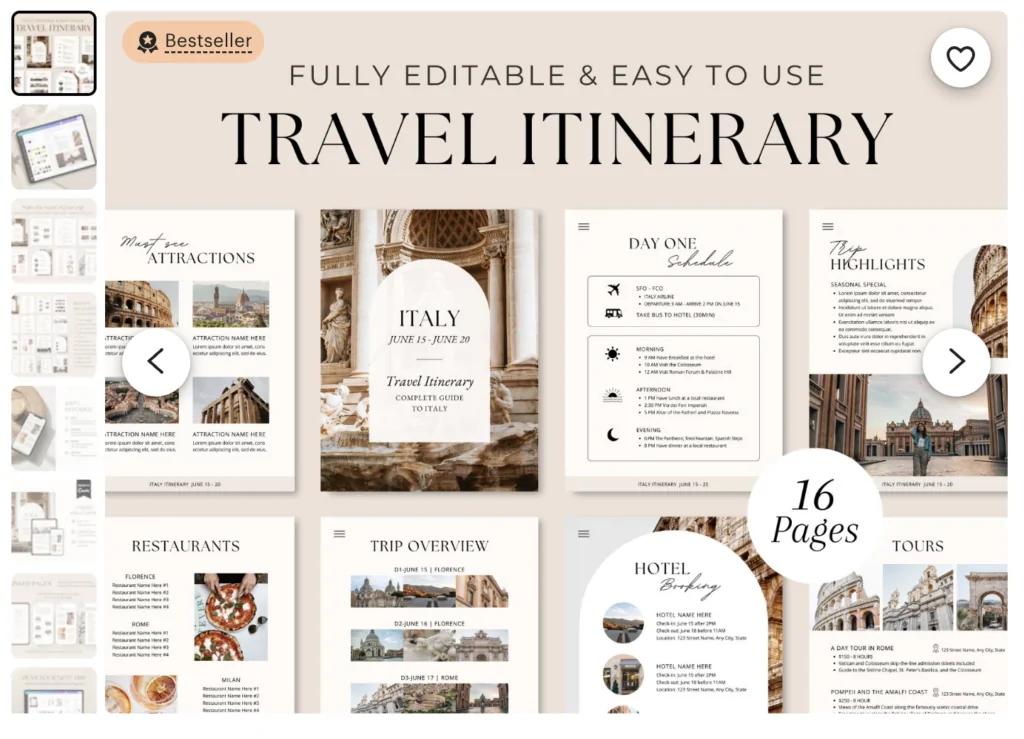
Letter to New Travel Creators: If you’ve read this far, you’re already ahead of 90% of people who say they’ll start ‘someday’. You don’t need a massive audience or perfect gear to sell travel guides successfully. You only need your unique experiences and the courage to start. Remember this: every journey you’ve taken holds a story someone else needs. Don’t let fear or comparison stop you from sharing it.
When you finally publish your first guide, it won’t just be a product; it’ll be your proof that passion can pay. So take that first step. Start writing. The world is waiting for your version of adventure.
FAQs
Do I need a big audience to start selling travel guides?
No, you don’t! You can sell travel guides successfully even with a small following. What matters most is creating value that solves a problem, like showing hidden gems or helping travelers save money. Use Pinterest, Reddit, and SEO-friendly blogs to attract organic buyers instead of relying solely on followers.
How do I know if my travel guide idea will actually sell?
Before you spend weeks creating, validate your idea. Search your topic on Google, Etsy, and Pinterest; if people are already searching for similar guides, that’s proof of demand. You can also post a short poll on Instagram or in travel Facebook groups asking, “Would you buy a detailed guide for [destination]?” If people respond, you’re on the right track.
What’s the best platform to sell travel guides for beginners?
If you’re just starting, the easiest platforms are Gumroad and Etsy. Both allow you to upload your digital products, set your price, and start selling instantly; no tech setup required. As your audience grows, you can expand to your own website using Payhip or Podia for more customization.
How do I price my first travel guide?
A good starting point is between $9–$29, depending on the guide’s depth, design, and audience. Keep in mind that people pay for clarity and convenience, not just information. You can test different prices over time, bundle related guides, or offer a smaller freebie to attract subscribers to your email list.
What if I’m not a writer or designer? Can I still sell travel guides?
Absolutely. You don’t need to be a professional writer or designer to sell travel guides that people love. Use Canva templates, add real photos from your travels, and write in a friendly tone, like explaining tips to a friend. Your authenticity and local insight are more valuable than perfect grammar or fancy design.
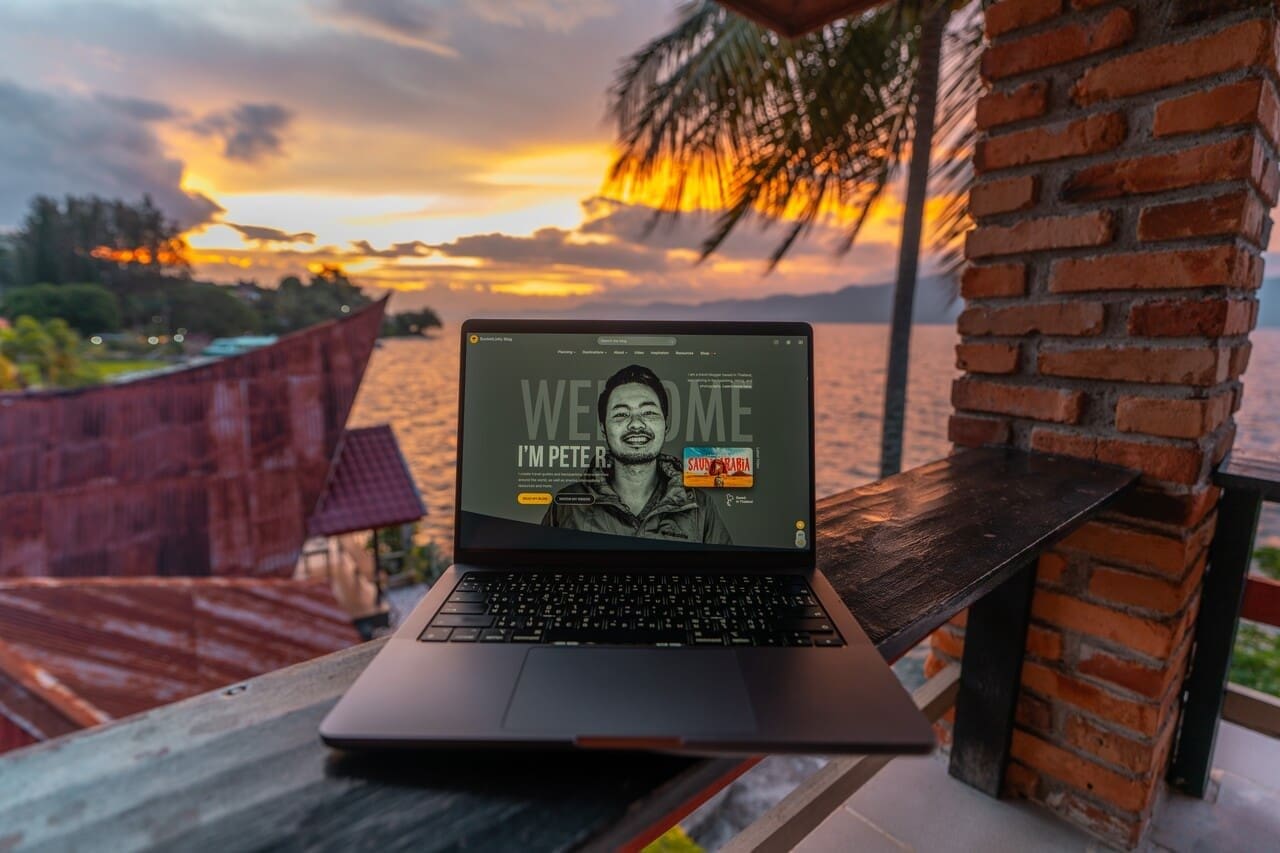
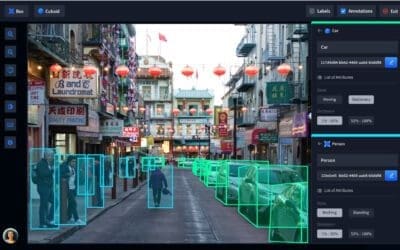



0 Comments